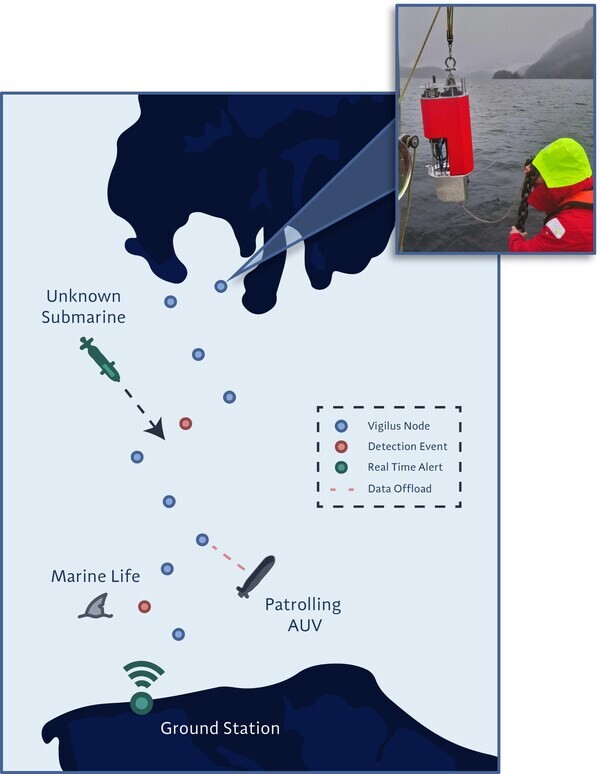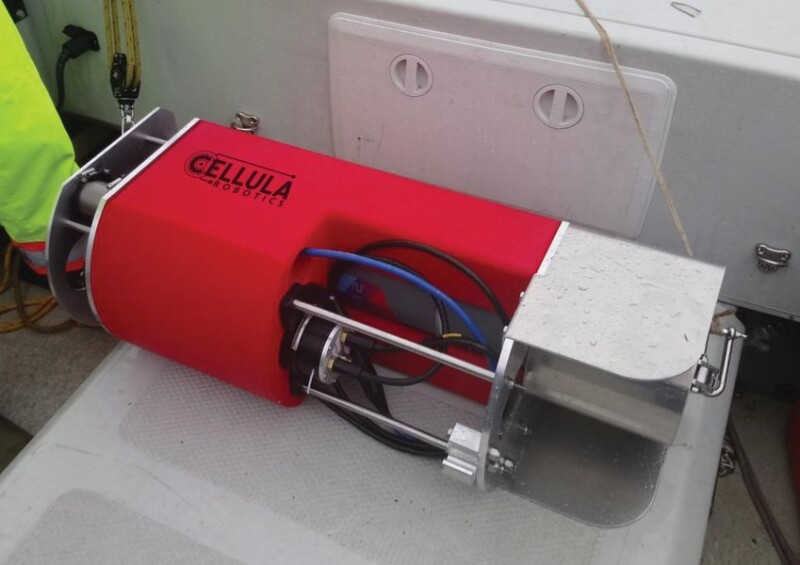Cellula Robotics has introduced its latest underwater surveillance innovation, Vigilus. Vigilus features a submersible surveillance array equipped with acoustically meshed environmental sensor nodes.
Positioned strategically kilometers apart on the seafloor, these nodes form an interconnected network of listening stations, functioning as an underwater "trip wire". Notably, Vigilus nodes boast a compact, cable-less design, enabling deployment from small watercraft or covertly via a large Uncrewed Underwater Vehicle (UUV), even in challenging environments such as beneath ice sheets. This adaptability makes Vigilus an ideal tool for surveillance and environmental monitoring in hard-to-access areas, including chokepoint surveillance in the Arctic.

Cellula's Vigilus acoustic surveillance array, depicted in the prototype being deployed (top right corner), embodies a state-of-the-art submersible surveillance system engineered for underwater monitoring and security applications. Cellula Robotics Ltd. Photo.
Each Vigilus node is outfitted with advanced sensors for seamless collection, processing, encryption, and response to acoustic and environmental data, functionality ensuring swift alert generation, shared among nodes and transmitted to nearby assets and Vigilus' shoreside gateway for secure, near real-time alerts.
Originating from a successful prototype developed for the Royal Australian Navy (RAN), Vigilus represents an advancement in underwater surveillance technology, company officials said.
"We are thrilled to introduce this innovation to the market," Neil Manning, CEO of Cellula Robotics, said in a statement announcing the launch of the new product. "Vigilus will empower our customers to operate with enhanced confidence and security in the most challenging underwater environments, including the Arctic."





